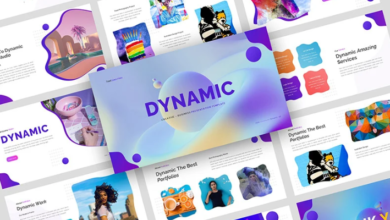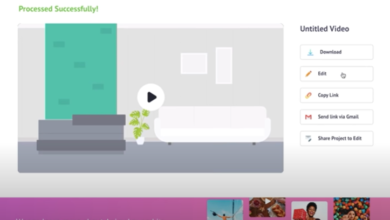The Role of iOS in the Internet of Things (IoT): Bridging the Digital Divide

The Internet of Things (IoT) has developed as a significant and influential phenomenon, facilitating the connection between the physical and digital realms in novel and unparalleled manners. In this landscape of interconnected devices, iOS has carved out a significant niche, playing a crucial role in facilitating seamless communication and control within the IoT ecosystem. This article explores the pivotal role of iOS devices in the Internet of Things and delves into the key development considerations for building iOS apps within this dynamic context.
The Intersection of iOS and IoT
1. Device Integration
iOS devices, including iPhones, iPads, and Apple Watches, serve as powerful hubs for IoT ecosystems. Their ubiquity and user-friendly interfaces make them ideal platforms for controlling and monitoring IoT devices. With the Apple HomeKit framework, iOS facilitates the integration of smart home devices, allowing users to manage lights, thermostats, security systems, and more from a centralized iOS app.
2. Seamless Connectivity
iOS leverages various communication protocols to ensure seamless connectivity with IoT devices. Bluetooth Low Energy (BLE), Wi-Fi, and cellular networks enable iOS devices to communicate with a diverse range of IoT sensors, actuators, and other connected devices. This seamless connectivity is crucial for the real-time exchange of data and commands, enhancing the overall user experience.
3. IoT App Ecosystem
The App Store is home to a burgeoning ecosystem of IoT applications. These apps cater to a wide array of IoT use cases, from health and fitness tracking to home automation and industrial IoT. The iOS app ecosystem empowers users to discover, install, and manage applications that seamlessly integrate with and control their IoT devices.
Development Considerations for iOS Apps in IoT Context
1. Security and Privacy
Security is paramount in the IoT landscape, where devices collect and exchange sensitive data. iOS, known for its robust security features, provides a secure foundation for IoT app development. Developers must implement strong encryption, secure communication protocols, and follow best practices to safeguard user data and protect against potential vulnerabilities.
2. Standardized Protocols
IoT relies on standardized communication protocols to ensure interoperability among diverse devices. iOS supports widely used protocols like MQTT, CoAP, and HTTP/HTTPS, enabling developers to build iOS apps that can communicate seamlessly with a variety of IoT devices. Adhering to these standards enhances the compatibility and versatility of iOS apps in the IoT ecosystem.
3. User Experience Design
Creating a seamless and intuitive user experience is crucial for IoT apps on iOS. Developers must design interfaces that enable users to effortlessly interact with and monitor their IoT devices. Features like push notifications, widgets, and Siri integration can enhance the overall user experience, making the iOS app a central hub for managing IoT ecosystems.
4. Background Processing and Multitasking
iOS provides capabilities for background processing, allowing IoT apps to continue monitoring and processing data even when not actively in use. This is essential for real-time updates and ensures that users receive timely information from their IoT devices. Consideration should be given to efficient background processing to minimize battery impact and optimize resource usage.
5. Energy Efficiency
IoT devices often operate on battery power, emphasizing the importance of energy efficiency in iOS apps. Developers should optimize code for power consumption, utilize background modes judiciously, and leverage iOS’s energy-efficient features to ensure that the app doesn’t excessively drain the device’s battery when interacting with IoT devices.
6. Cloud Integration
Many IoT scenarios involve cloud-based services for data storage, analytics, and remote device management. iOS apps must seamlessly integrate with cloud platforms to enable data synchronization, remote control, and access to advanced analytics. Utilizing cloud services compatible with iOS, such as Apple’s CloudKit, ensures a cohesive and scalable IoT solution.
7. Over-the-Air (OTA) Updates
IoT devices often require firmware updates to enhance functionality or address security vulnerabilities. iOS apps should support Over-the-Air updates, allowing users to easily update the firmware of connected IoT devices directly from their iOS devices. This capability ensures that IoT ecosystems remain up-to-date and secure.
Future Trends and Opportunities
1. Edge Computing on iOS Devices
The integration of edge computing capabilities on iOS devices is a potential future trend in IoT. This would enable processing data closer to the source, reducing latency and dependency on cloud services. iOS app developers can explore incorporating edge computing into their applications, opening up new possibilities for real-time decision-making in IoT scenarios.
2. Expansion into Wearables
With the growing popularity of wearables, including the Apple Watch, iOS developers can extend their reach into the realm of IoT wearables. Integrating IoT functionalities into wearable apps can unlock innovative use cases, such as health monitoring, smart navigation, and seamless interaction with IoT devices directly from the user’s wrist.
3. Integration with Augmented Reality (AR)
As AR technologies advance, iOS developers can explore integrating AR into IoT apps for enhanced user experiences. Visualizing IoT data in augmented reality, such as overlaying information from smart home devices onto the real world, can provide users with a more intuitive and immersive interaction with their IoT ecosystems.
Conclusion: Shaping the Future of Connected Experiences
In conclusion, the role of iOS in the Internet of Things extends far beyond mere device control; it serves as a catalyst for seamless connectivity, user-centric experiences, and the evolution of IoT ecosystems. The synergy between iOS devices and IoT opens avenues for innovation, offering developers the opportunity to create transformative applications that bridge the physical and digital worlds.
As the evolution of iOS unfolds, the hiring of iOS developers emerges as a strategic move to play a pivotal role in shaping the future of connected experiences. These developers, through their expertise, become instrumental in advancing IoT applications. By embracing stringent security measures, adhering to standardized protocols, and prioritizing user experience design, the decision to hire iOS developers becomes synonymous with contributing to a paradigm shift. This fusion of iOS and IoT signifies more than a mere technological convergence; it signifies a transformative shift in how we engage with and perceive the interconnected world around us.




